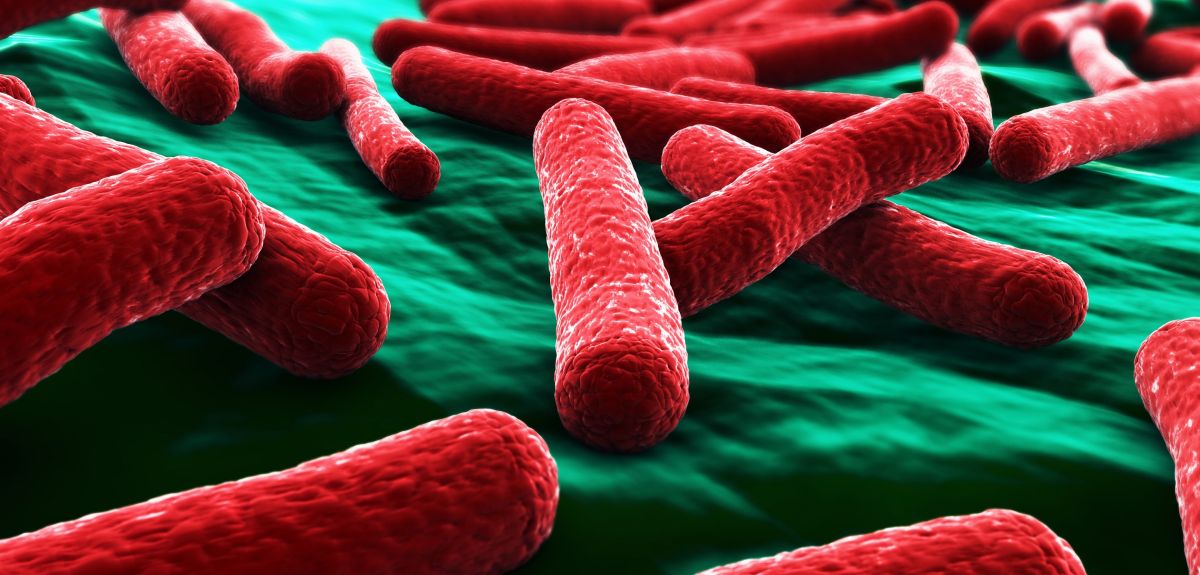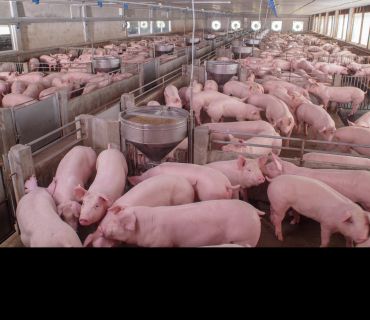
Antimicrobial use in agriculture can breed bacteria resistant to first-line human defences
A new study led by the University of Oxford has shown that overuse of antimicrobials in livestock production can drive the evolution of bacteria more resistant to the first line of the human immune response. The results, published today in the journal eLife, indicate that farmed pigs and chickens could harbour large reservoirs of cross-resistant bacteria, capable of fuelling future epidemics.
 Intensive pig and chicken farms could be acting as reservoirs of bacteria resistant to both last defence antimicrobial drugs and the human innate immune response. Image credit: Shutterstock.
Intensive pig and chicken farms could be acting as reservoirs of bacteria resistant to both last defence antimicrobial drugs and the human innate immune response. Image credit: Shutterstock.However, some AMPs are also used widely in livestock production, both to control infections and as growth promoters. This has raised concerns that agricultural AMP use may generate cross-resistant bacteria that could then overcome the human innate immune response.
In this new study, led by the University of Oxford, researchers have demonstrated that evolution of such cross-resistant bacteria is not only possible, but also highly likely.
To test the idea, the researchers used colistin, an AMP produced by a bacterium (Bacillus polymyxa) that is chemically and functionally similar to AMPs produced in animals. Colistin has become increasingly important as a ‘last-line of defence’ for treating infections caused by multidrug-resistant bacteria. However, extensive use of colistin in livestock production since the 1980s has driven the spread of E.coli bacteria carrying mobile colistin resistance (MCR) genes.
In this study, E.coli carrying an MCR gene (MCR-1) were exposed to AMPs known to play important roles in innate immunity in chickens, pigs, and humans. The bacteria were also tested for their susceptibility to human serum, which contains a complex cocktail of antimicrobial compounds, and for their ability to infect wax moth larvae (Galleria mellonella).
Our study clearly shows that anthropogenic use of antimicrobial peptides such as colistin can drive the accidental evolution of resistance to the innate immune system of humans and animals. This has major implications for the design and use of therapeutic antimicrobial peptides and suggests that resistant genes may be difficult to eradicate, even if antimicrobial peptide use in agriculture is withdrawn.
Professor Craig MacLean, Department of Biology, University of Oxford.
Key findings:
- On average, the MCR-1 gene increased resistance to host AMPs by 62%, compared with bacteria lacking the gene. This increased resistance provided a strong selective advantage to the MCR-1 gene in the presence of AMPs.
- Similarly, E.coli carrying MCR-1 were at least twice as resistant to being killed by human serum.
- E.coli carrying MCR-1 had increased virulence on wax moth larvae, compared with control strains lacking the gene. Larvae injected with MCR-1 E.coli showed an approximately 50% reduced survival, compared with larvae injected with control E.coli.
The results demonstrate that use of bacterial AMPs in agriculture can generate broad cross-resistance to the human innate immune response.
According to the researchers, cross-resistance to human AMPs is likely to be widespread, given that AMPs tend to have similar cellular targets and physico-chemical properties. Pigs and chickens in agriculture are already known to act as important reservoirs of colistin-resistant E.coli.
 Professor Craig McLean. Photo credit: John Cairns.
Professor Craig McLean. Photo credit: John Cairns.Cóilín Nunan, Scientific Adviser to the Alliance to Save Our Antibiotics (who were not involved in the study) said: ‘This new study shows that colistin resistance is probably even more dangerous than previously thought. It is astonishing that so many governments, like the UK’s, are refusing to ban colistin use in farming. It is also remarkable that the British government is still opposed to banning preventative mass medication of intensively farmed animals with antibiotics, even though the EU banned such use over a year ago.’
Dr Jessica Blair (University of Birmingham), Editor in Chief of NPJ Antimicrobials and Resistance (who was not involved in the study) said: ‘Antimicrobial peptides, including colistin, have been heralded as a potential part of the solution to the rise of multidrug-resistant infections. This study, however, suggests that resistance to these antimicrobials may have unintended consequences on the ability of pathogens to cause infection and survive within the host. This is particularly worrying because it suggests that E. coli carrying the MCR-1 gene may have a clear selective advantage even if the use of colistin is carefully controlled.’
The study ‘The evolution of colistin resistance 1 increases bacterial resistance to host antimicrobial peptides and virulence’ has been published in the journal eLife.
 Largest ever UK study reveals stark ethnic and social inequalities in lung cancer diagnosis
Largest ever UK study reveals stark ethnic and social inequalities in lung cancer diagnosis
 Oxford’s gargoyles come to life in new Extended Reality (XR) interactive experience
Oxford’s gargoyles come to life in new Extended Reality (XR) interactive experience
 Treating bullying as everyone’s problem reduces incidence in primary schools
Treating bullying as everyone’s problem reduces incidence in primary schools
 Oxford's Ashmolean Museum saves Fra Angelico masterpiece to go on public display from December
Oxford's Ashmolean Museum saves Fra Angelico masterpiece to go on public display from December
 New, ARIA-backed project aims to unlock radically cheaper AI hardware
New, ARIA-backed project aims to unlock radically cheaper AI hardware